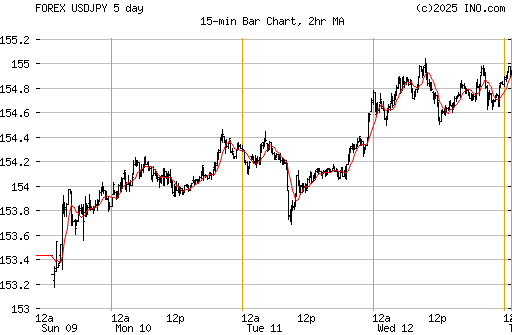NHK has been quite busy recently spreading the good news that radiation exposure is somehow not what you've been led to believe by silly bloggers and tweets, if you only listen to the government experts and politicians.
In October, NHK did a program where the meals prepared in different households in different locations in Japan, including two in Fukushima Prefecture were analyzed for radiation. Surprise, surprise, the meals in a family in Koriyama City, Fukushima contained zero radioactive materials while other families in other locations had a small amount of radioactive materials in their meals. (NHK actually said "zero", instead of "below detection limit".) Well, the caveat was that the researcher's equipment (germanium semiconductor detector) to analyze the radiation turned out to be broken, and NHK had to take down the test result page from the website. (If you read Japanese, the sorry story is related here, for example.)
But the program had been aired already, and probably it has convinced quite a few mothers not to worry about radiation any more when they go shopping for food for the families. NHK says so, it's safe! I feel so bad for having avoided Fukushima produce!
NHK just did it again, a bit more subtle way this time, in the news on November 5 regarding the new government initiative to study the effect of "low-level" radiation. For NHK, a public broadcaster, "low-level" radiation means 20 millisieverts per year for non-radiation workers because the politician said so. To say it in a different way, NHK is saying the annual radiation exposure limit for radiation workers before the Fukushima I Nuke Plant accident is now the "low-level" for the general public.
From NHK News Japanese (11/5/2011):
細野原発事故担当大臣は、浜松市で講演し、東京電力福島第一原子力発電所の事故に関連して、年間20ミリシーベルト程度の低い放射線量の被ばくが健康に与える影響について、有識者による作業チームを作り調査する考えを示しました。
Goshi Hosono, Minister in charge of nuclear accident, gave a lecture in Hamamatsu City [in Shizuoka Prefecture] and indicated that he would create a working group of experts to study the effect of low-level radiation of about 20 millisieverts per year on health, in the aftermath of the Fukushima I Nuclear Power Plant accident.
この中で、細野原発事故担当大臣は「年間の被ばく線量が100ミリシーベルト以上の場合は、過去の原発事故によって、健康にある程度の影響が出ることが分かっているが、それ以外についてはまだ確認できていない」と述べました。
Minister Hosono said, "If the annual cumulative radiation level is 100 millisieverts and above, we know from the past nuclear plant accidents that there will be some effect on health. But other than that, nothing is confirmed."
そのうえで、細野大臣は「すでに拡散した放射性物質の低線量被ばくをどう考えるか、もう少し深く分析しなければならない。20ミリシーベルトで線を引いて、国として考え方を整理したい」と述べ、年間20ミリシーベルト程度の低い放射線量の被ばくが健康に与える影響について、有識者による作業チームを作り調査する考えを示しました。
He continued, "We need to investigate further on how to think about low-level radiation exposure from the radioactive materials already dispersed. We will draw a line at 20 millisieverts, and come up with the response as the national government." He then indicated that a working group of experts would be formed to study the effect of low-level radiation, about 20 millisieverts per year, on health.
また、細野大臣は、東日本大震災で発生した大量のがれきを被災地以外で処理する広域処理について、「岩手県と宮城県の廃棄物は放射性廃棄物ではないし、燃やしたときにも危険性はなく、灰を含めて安全に処理できるものだ。私どもが安全性を保証し責任を負うので、協力してもらいたい」と述べ、各自治体の協力を求めました。
Minister Hosono also made a comment on the wide-area disposal of disaster debris from the March 11 earthquake and tsunami outside the disaster-affected areas. "The debris in Iwate Prefecture and Miyagi Prefecture is not radioactive waste. There is no danger when it is burned, and the ashes can be safely disposed of. We will guarantee the safety and be responsible for the safety, so we want the municipalities to cooperate", he said.
The last bit that Hosono blurted about the disaster debris is his pure fabrication. The disaster debris in Iwate and Miyagi IS radioactive, according to the actual measurement of the Ministry of the Environment, of which Hosono is the minister.
From Miyako City's incinerator, 133 becquerels/kg of radioactive cesium was detected when the Ministry did the test burn in preparation for shipping the debris to Tokyo. Miyako City is by no means the highest in terms of radiation levels in Iwate Prefecture. The Tokyo government has pledged to burn 500,000 tonnes, or 500,000,000 kilograms of debris from Iwate alone.
Hosono says the national government will guarantee the safety, and I have to ask him to define "safety". Judging from what this administration and the previous one and TEPCO (and their supporters) have said, unless one dies of acute radiation poisoning by being zapped with several sieverts of radiation in one shot, it is "safe".
Soon, 100 millisieverts per year may indeed become "safe", as per NHK, as per Dr. Shunichi Yamashita. It will be still ways to go to reach Dr. Wade Allison's 1.2 sievert per year limit recommendation, though.


















 Tokyo Time
Tokyo Time
![[Most Recent Quotes from www.kitco.com]](http://www.kitconet.com/charts/metals/gold/t24_au_en_usoz_2.gif)

